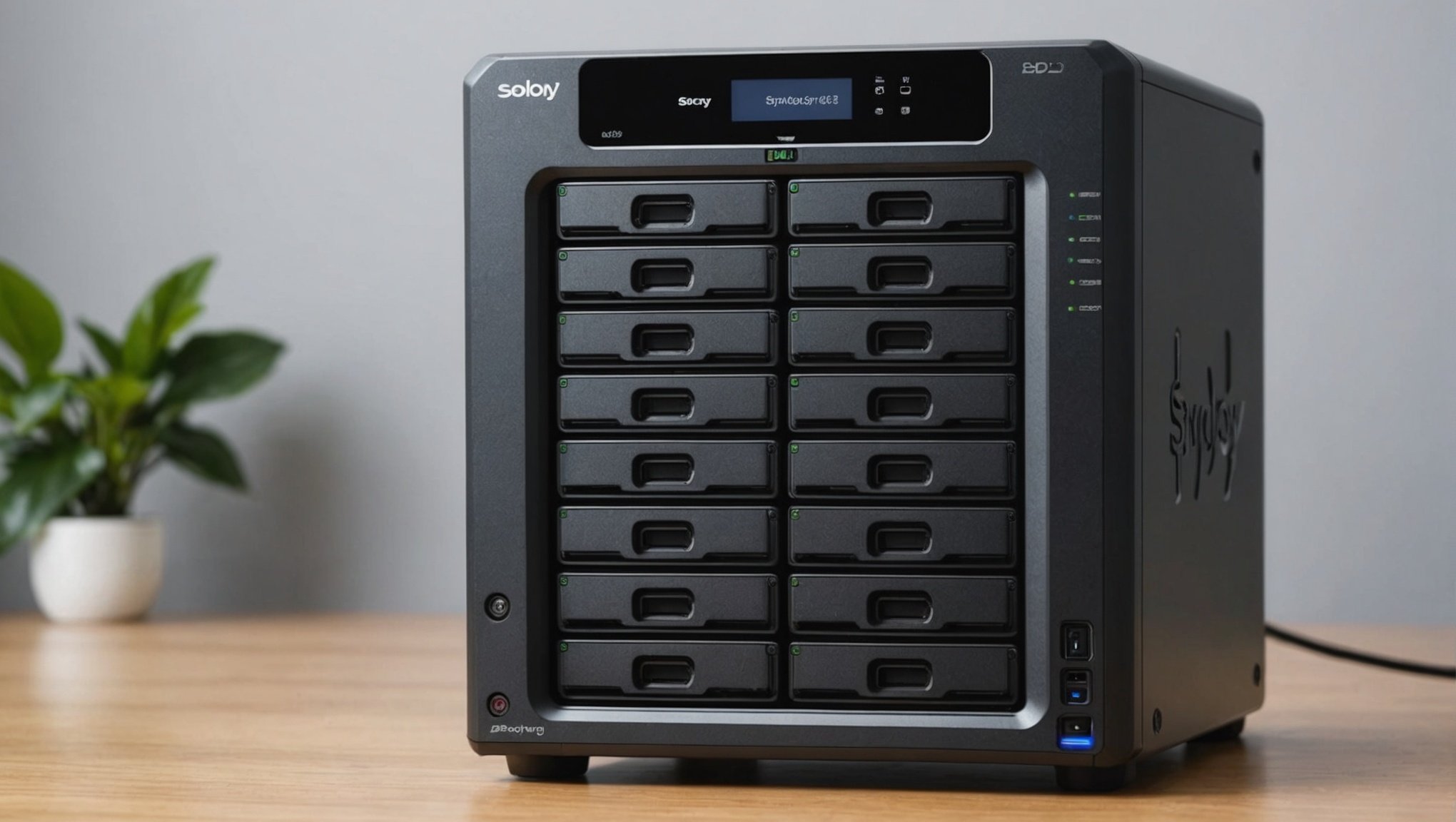RAID, which stands for Redundant Array of Independent Disks, is a method of storing the same data in different places on multiple hard disks or solid-state drives to protect data in the case of a drive failure. Today, we will focus on RAID 5, a popular choice for users who need a balance between performance, capacity, and data protection.
Installing and configuring a RAID 5 array on a Synology DS920+ can seem daunting, especially if you’re not familiar with the process. However, we assure you that with a bit of guidance, you’ll be able to handle this task with confidence. Let’s dive into the detailed steps you need to follow.
Additional reading : What steps are involved in setting up a 10GbE network using an ASUS XG-C100C card for a high-speed data transfer?
Understanding RAID 5
Before we jump into the installation process, it’s important for you to understand what RAID 5 is and why it could be a good choice for your storage needs. RAID 5 requires at least three drives to store data and parity checksums, which are used to recover data if one drive fails. This configuration offers a good balance of data protection, system performance, and available capacity.
When a drive fails in a RAID 5 setup, the system can still continue to operate by reconstructing the lost data using the parity information. However, performance will be degraded until the drive is replaced and the data is rebuilt onto the new drive.
Have you seen this : How do you configure a TP-Link Archer AX6000 for optimal gaming performance?
Purchasing Compatible Hard Drives
The first step in setting up a RAID 5 array on your Synology DS920+ is to purchase compatible hard drives. It’s crucial to ensure that all drives are identical in terms of capacity, speed, and manufacturer. This uniformity helps to prevent potential compatibility issues and ensures optimal performance of your RAID 5 array.
When purchasing hard drives, consider your storage needs. The total capacity of a RAID 5 array is the capacity of a single drive multiplied by the number of drives minus one. So for example, if you install four 2TB drives, your total storage capacity will be 6TB.
Installing the Hard Drives
Once the hard drives have been purchased, the next step is to physically install them into your Synology DS920+. Start by shutting down your Synology DS920+ and unplugging all cables. Then, remove the front cover of the device and extract the drive trays.
Place the hard drives into the drive trays, ensuring they are firmly seated. Then, secure the hard drives using the included screws. Finally, return the drive trays to the Synology DS920+ and replace the front cover.
Configuring RAID 5 on the Synology DS920+
With the hard drives installed, you can now configure the RAID 5 array. Start by connecting all cables and powering on the Synology DS920+. Connect to the Synology Web Assistant on your computer’s browser using the IP address of the Synology DS920+.
In the Synology Web Assistant, navigate to the “Storage Manager” and then to the “Volume” tab. Click on “Create” and follow the setup wizard. When asked to select a RAID type, choose “RAID 5”.
You will be prompted to select the hard drives to include in the RAID 5 array. Ensure you select all the hard drives you installed. The system will then create the RAID 5 array, a process that can take several hours depending on the size and number of drives.
Maintaining the RAID 5 Array
Once the RAID 5 array is set up, maintenance is straightforward. The Synology DS920+ continuously monitors the health of the hard drives. If a drive fails, the system will notify you.
To replace a failed drive, simply remove the faulty drive and replace it with a new one of the same capacity and speed. The Synology DS920+ will automatically rebuild the RAID 5 array with the new drive.
Remember, while RAID 5 provides some level of data protection, it’s not a substitute for a proper backup. Be sure to regularly back up your data to protect against multiple drive failures or other catastrophic events.
By following these steps, you can successfully install and configure a RAID 5 array on a Synology DS920+ for enhanced performance. With a little time and patience, you’ll have a robust, efficient storage solution that helps protect your important data.
Optimal Usage of RAID 5 Array on Synology DS920+
Once you have successfully installed and configured your RAID 5 array on Synology DS920+, it’s time to strategically manage and utilize this storage setup for maximum benefit.
Synology DS920+ provides an array of features that can be effectively used to enhance the performance and productivity of your RAID 5 setup. The system supports the Btrfs file system, providing flexible shared folder/user quota systems that offer comprehensive quota control over all user accounts and shared folders. This feature enables you to optimally manage storage, ensuring that the system does not get overwhelmed.
You can also take advantage of the Snapshot Replication feature, which provides schedulable and instantaneous data protection for shared folders and virtual machines in iSCSI LUNs. With this feature, if disaster strikes, you can quickly and easily recover data to a specific point in time.
Monitor your RAID 5 setup regularly to keep track of drive health. The Storage Manager offers a visual representation of your storage configuration, allowing you to monitor the status and health of each drive individually. In case any abnormality is detected, the system will alert you, helping to prevent potential data loss. It’s crucial to remember that regular monitoring is key to maintaining the longevity and performance of your RAID 5 array.
Wrapping Up
In conclusion, installing and configuring a RAID 5 array on a Synology DS920+ may seem like a daunting task, but with the right guidance and understanding of the process, it becomes a manageable task. RAID 5 offers an effective balance between data protection, system performance, and storage capacity, making it a popular choice for many users.
Remember, consistent uniformity in hard drives is essential for optimal performance. Also, while RAID 5 provides data protection, it should not replace a proper backup system. Regular backups and monitoring of the storage system are crucial practices to maintain the health and longevity of the drives.
The Synology DS920+ comes equipped with features that assist in the optimal utilization of the RAID 5 array. Leveraging these features can significantly enhance the performance and productivity of your storage setup. Ultimately, with a bit of time and patience, you will have a robust and efficient storage solution that effectively protects your valuable data.











